Uniform Motion
A body is said to have uniform motion if it travels equal distances in equal intervals of time. The distance-time graph for a uniform motion is a straight line.
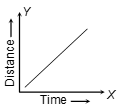
For example
This body is travelling 25 m in the first second, 25 m in the second and 25 m in the third second. It is therefore undergoing uniform motion.

Also Check: Force
Non Uniform Motion
A body is said to have non-uniform motion if it travels unequal distances in equal intervals of time.
Most of the motions, which we observe around us, are non-uniform in nature. The distance-time graph for a non-uniform motion is a curved line.

For example
If a body starts at A and acted upon by a force it initially travels slowly then it gains speed. It travels 5 m in the first second, 15 m in the next second and 25 m in the third. As these are unequal distances, it is known as non-uniform motion.

Ques. An object is moving, the distance traveled by the object with respect to time as given the table below. the motion of object is uniform or non-uniform?
| Distance (m) | 5 | 8 | 14 | 23 |
| Time (s) | 3 | 4 | 6 | 9 |
Solution:
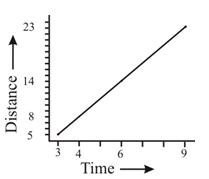
Since distance time graph is straight line therefore object is performing uniform motion
Also Check: Light
Speed
Speed tells us how fast an object is moving but it doesn’t tell anything about the direction. Speed of a body is defined as the distance travelled by the body per unit time. It is a scalar quantity.
Speed = Distance / Time or v = s/t
Where, v is the speed,
s is the distance covered
t is the time taken.

Seed tells us how fast an object is moving
Unit of Speed
The S.I. unit of speed is m/s (meter per second). It can also be represented as cm/s (centimeter per second) or km/h (kilometer per hour).
Also Check: Refraction
Types of Speed
Uniform Speed or Constant Speed
A body has a uniform speed if it travels equal distances in equal intervals of time.
For example :

Speed (A to B) = 30/1 = 30 km/hr
Speed (B to C) = 30/1 = 30 km/hr
Speed (C to D) = 60/2 = 30 km/hr
So, we see speed is constant. Equal distance been travelled in equal time interval.
Non Uniform Speed or Variable Speed
A body has a non-uniform speed if it travels unequal distances in equal intervals of time.
For example :

Speed (A to B) = 30 km/hr
Speed (B to C) = 20 km/hr
Speed (C to D) = 10 km/hr
So, we see speed is variable. Unequal distance been travelled in equal time interval.

Roller coaster, speed varies with time. It increases while coming down and decreases while going up.
Average Speed
Average speed of a body is the total distance travelled by the body divided by the total time taken.
i.e. Average Speed = Total Distance Travelled / Total Time Taken
Instantaneous Speed
Instantaneous refer to an instant or for short interval of time. We define it as a scalar measure of the rate of movement of a body expressed as the rate of change of position with respect to time at a particular point. It is measured in metre per second
Instantaneous Speed = Distance Travelled / Short Interval of Time
Now, suppose you are moving from Delhi to Jaipur in a car. The approximate distance between Jaipur to Delhi is 400km and it takes around 8 hour. If you drive with a fixed (constant) speed of 50km per hour you will reach on time. But quite possible your speed not uniform throughout. Some point of time you will be moving with speed of 100 km/h and some point of time 5 km/h. So the speed at point of time is known as instantaneous speed. Overall speed (total distance 400km divided by total time 8 hour) throughout the journey will be your average speed.
Also Check: Solar System
VELOCITY
Velocity of a body is defined as the displacement travelled by it per unit time. In other words velocity of a body is its speed in a given direction. It is a vector quantity.
Velocity = Displacement / Time
or v = s/t
where v is the velocity
s is the distance travelled
t is the time taken
The S.I. unit of velocity is m/s
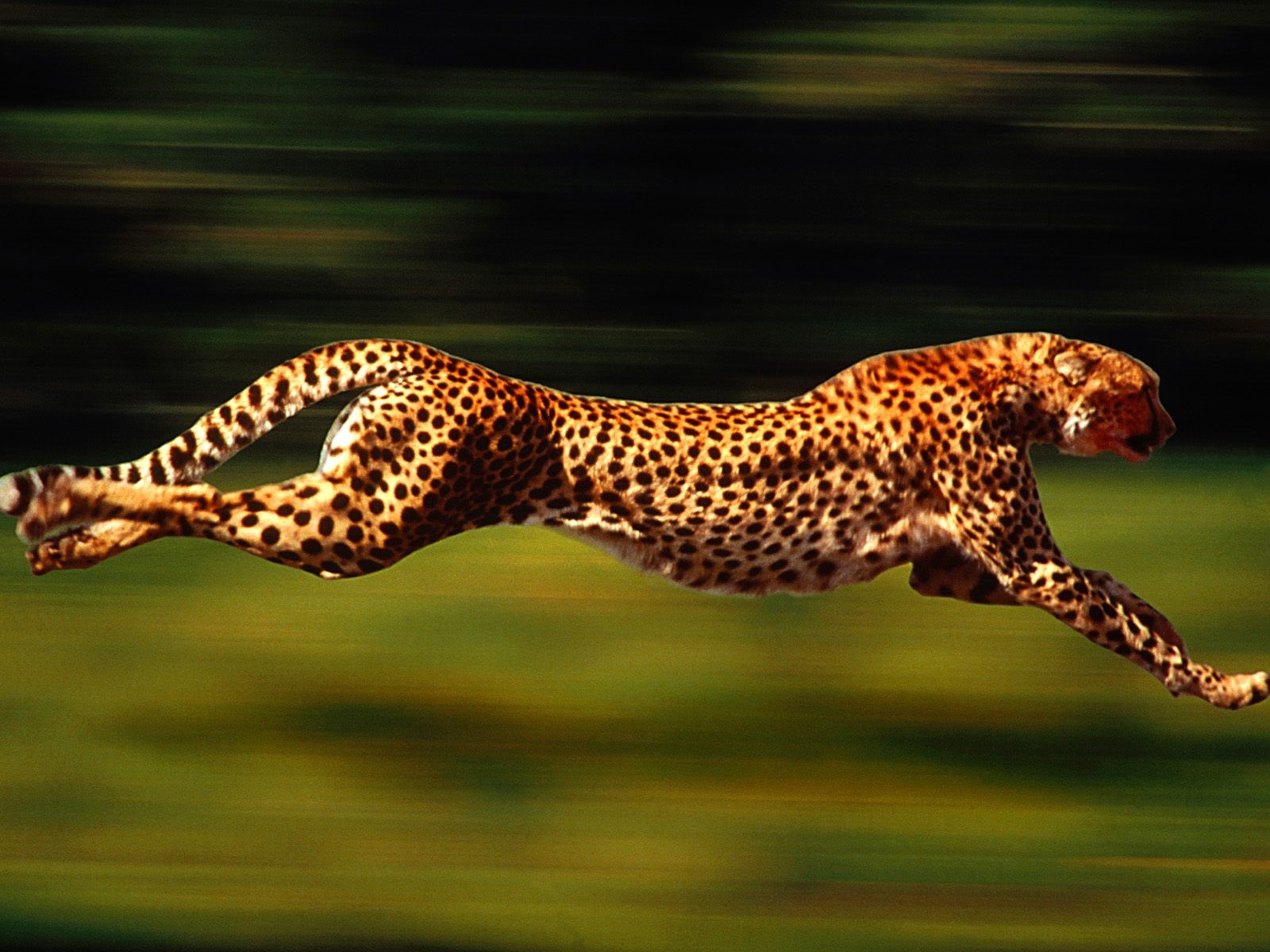
Velocity tells how fast an object moving in a given direction
Types of Velocity
Uniform Velocity
A body is said to have uniform velocity if it moves in a straight line and covers equal displacements in equal intervals of time, howsoever small these intervals may be.
Non Uniform Velocity
A body is said to have non uniform velocity if it moves in a straight line and covers unequal displacements in equal intervals of time, howsoever small these intervals may be.
Average Velocity
It is defined as total displacement covered by particle divided by total time taken to cover that displacement.
Also Check: Motion
Instantaneous Velocity
The Instantaneous velocity of a body displacement per unit time calculated for very small interval time.
Relative Velocity
Velocity of body with respect to another body is called relative velocity.
For example: If two bodies are moving with equal velocity of 5 km/h in same direction then their velocity will be zero but if they are moving in opposite direction then the relative velocity of one body with respect to another will be 10 km/h.
Ques. If a person is moving along a straight line AB.

Find the average velocity if
(a) If a person moves from A to C with velocity v1 and C to B with velocity v2 with C as a mid-point of line AB.
(b) If a person is moving along a straight line AB person takes same time for traveling AC as well as CB while traveling AC with velocity v1 and CB with velocity .
Solution :
(a) Person moves from A to C with velocity v1 and C to B with velocity v2 So, average velocity of a person for whole motion

(b) If a person is moving along a straight line AB (Now C is not a mid-point of AB) person takes same time for traveling AC as well as CB while traveling AC with velocity v1 and CB with velocity .
So,

Acceleration
The rate of change of velocity with time is known as acceleration. In other words, the acceleration is defined as the change in velocity per unit time.

Where
a = Acceleration of the body
v = Final velocity of the body
u = Initial velocity of the body
t = Time taken for this change in velocity

Freely falling body whose velocity continuously with time
Ques. A car attains a speed of 10 ms-1 in 10 s, starting from rest. Calculate the acceleration of the car.
Solution: Given,
Initial velocity, u = 0
Final velocity, v = 10ms-1
Time, t = 10 s
We know that, acceleration,
a = v - u / t
a = 10 - 0 / 10 = 1 ms-2
Acceleration of the car = 1 ms-2
Also Check: Satellites
Types of Acceleration
Uniform Acceleration
A body has uniform acceleration when it travels in a straight line and its velocity increases or decreases by equal amounts in equal intervals of time.
It can also be said that when the velocity of a body changes at a uniform rate, it is said to have uniform acceleration
The velocity-time graph of a body having uniform acceleration is a straight line.
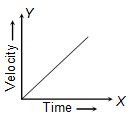
For example., A freely falling body has an uniform acceleration.
Non Uniform Acceleration
A body is said to have non-uniform acceleration if its velocity increases or decreases by unequal amount in equal intervals of time.
OR
When the velocity of a body changes at unequal rate or non-uniform rate.
The velocity-time graph for a body having non uniform acceleration is curved line.
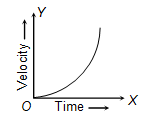
For example most of the motion in daily life are having non uniform acceleration.
Negative Acceleration (Retardation or Deceleration)
Till now we have seen the case of increasing velocities. In many cases, there is also decrease in velocity.
Also Check: Waves
For example, when we apply brakes, the car stops after some time.
Therefore, if the velocity of the body increases, acceleration is said to be Positive Acceleration And if the velocity of a body decreases, acceleration is said to be Negative Acceleration, which is also called as Retardation or Deceleration.
Retardation is measured in the same way as acceleration.

Frequently Asked Questions
- A horse galloping.
- A person running a 1000 m race.
- A bouncing ball.
- Two cars crashing.
- An airplane flying through clouds before landing.
- Pulling a box along a path.
- A truck traveling to a market.
- A car stopping.
Non-uniform velocity occurs when an object moves different distances in the same amount of time or changes direction as it moves. For example, even though a ceiling fan spins at a steady speed, its velocity changes because it's always changing direction.
Uniform speed means an object travels the same distance over equal time periods. The graph of distance against time for uniform speed is a straight line.
Uniform acceleration is when an object’s speed increases at a steady rate over time. This means the acceleration does not change.
The SI unit of acceleration is meters per square second. An object has non-uniform acceleration if its speed changes by different amounts over equal time intervals.
Uniform velocity happens when an object covers the same distance in the same amount of time continuously. Non-uniform velocity occurs when an object covers unequal distances in the same amount of time.
Related Links
| S.no | Formulas List |
|---|---|
| 1. | Force |
| 2. | Frictional Force |
| 3. | Thrust and Pressure |
| 4. | Buoyant Force |
| 5. | Waves |
| 6. | Sound |
| 7. | Some Natural Phenomena |
| 8. | Electroscope |
| 9. | Lightning |
| 10. | Earthquake |